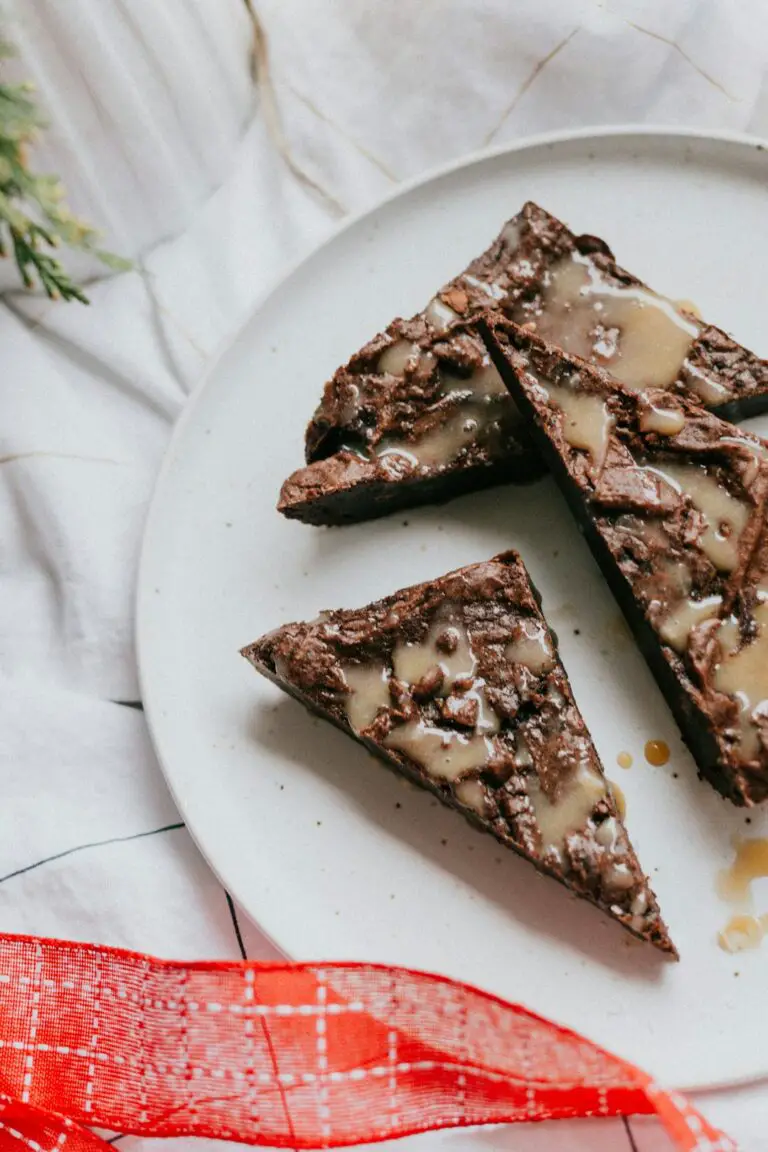Support our educational content for free when you purchase through links on our site. Learn more
How Much Dark Chocolate a Day for Diabetics? 🍫 7 Expert Tips (2025)

Imagine savoring a piece of rich, velvety dark chocolate without guilt—could it actually help manage your diabetes? It sounds like a dream, but emerging science and expert tasters at Chocolate Brands™ reveal that dark chocolate isn’t just a treat; it can be a smart addition to a diabetic diet when enjoyed correctly.
But how much is safe? And what should you look for on the label to make the best choice? In this comprehensive guide, we unwrap the optimal daily amount of dark chocolate for diabetics, explore the science behind its benefits, and share our top chocolate picks that balance indulgence with blood sugar control. Whether you’re a chocoholic or a curious newcomer, get ready to discover how to enjoy your favorite bittersweet delight without derailing your health goals.
Key Takeaways
- Moderation is essential: Most experts recommend limiting dark chocolate to about 1–2 ounces (28–56 grams) per day to avoid blood sugar spikes.
- Choose high cocoa content: Aim for 70% cocoa or higher to maximize flavanol benefits and minimize sugar.
- Watch the sugar and ingredients: Always check labels to avoid added sugars, unhealthy fats, and artificial additives.
- Dark chocolate may improve insulin sensitivity and heart health, but it’s not a cure—balance it within your overall diabetic diet.
- Individual responses vary: Monitor your blood sugar and adjust intake accordingly.
Ready to find your perfect bar? Check out our top diabetic-friendly dark chocolates from Lindt, Ghirardelli, Lily’s Sweets, and more in our Chocolate Bar Reviews.
👉 Shop diabetic-friendly dark chocolate:
- Lindt Excellence 90% Cacao: Amazon | Lindt Official
- Lily’s Sweets Stevia-Sweetened: Amazon | Lily’s Official
Table of Contents
- ⚡️ Quick Tips and Facts
- 🍫 The Sweet History of Cacao: A Diabetic-Friendly Journey?
- 🔬 Dark Chocolate & Diabetes: Unpacking the Science Behind the Sweetness
- ⚖️ The Golden Question: How Much Dark Chocolate is Just Right for Diabetics?
- 🔍 Decoding the Label: What to Look for (and Avoid!) in Diabetic-Friendly Dark Chocolate
- 👩🍳 Beyond the Bar: Creative Ways to Enjoy Dark Chocolate for Diabetics
- ⚠️ Potential Pitfalls & Precautions: When Dark Chocolate Isn’t So Sweet for Diabetics
- 🩺 Expert Opinions & Medical Consensus: What Do the Pros Say About Dark Chocolate and Diabetes?
- 🛒 Navigating the Chocolate Aisle: Our Top Picks for Diabetic-Conscious Indulgence
- 🚫 Dispelling Myths: Common Misconceptions About Dark Chocolate and Diabetes
- 🍽️ Your Diabetic Diet: Integrating Dark Chocolate Mindfully
- ✅ Conclusion: Savoring Smartly, Living Sweetly
- 🔗 Recommended Links
- ❓ FAQ: Your Burning Questions Answered
- 📚 Reference Links
⚡️ Quick Tips and Facts
Dark chocolate, especially with a high cocoa percentage (70% or more), can be a surprisingly diabetes-friendly treat. It’s packed with antioxidants, may help regulate blood sugar, and even offers heart-healthy benefits. But, like any treat, moderation is key!
Here’s the deal: Dark chocolate can be a delicious addition to a balanced diabetic diet, but it’s not a magic bullet. You’ll need to be mindful of portion sizes, sugar content, and overall dietary choices.
Think of it like this: Dark chocolate is like a powerful ally in your diabetes management journey. It can help you stay on track, but it’s not a substitute for a healthy lifestyle and regular medical care.
Want to learn more about how dark chocolate can fit into your life? Let’s dive into the fascinating world of cacao and its impact on diabetes!
🍫 The Sweet History of Cacao: A Diabetic-Friendly Journey?
Cacao, the raw bean that gives us chocolate, has a rich history dating back to ancient Mesoamerica. The Mayans and Aztecs revered cacao as a sacred food, using it in religious ceremonies and as a source of energy.
But here’s the twist: The chocolate we know and love today is a far cry from the bitter, unsweetened concoctions of the past. The addition of sugar, milk, and other ingredients transformed cacao into a global indulgence.
This brings us to the question: Can a sweet treat with such a sugary past be a good choice for diabetics? The answer, surprisingly, is a qualified yes!
The key lies in understanding the unique properties of dark chocolate and how it differs from its milk and white chocolate counterparts.
🔬 Dark Chocolate & Diabetes: Unpacking the Science Behind the Sweetness
Dark chocolate, especially those with a high cocoa percentage, is a treasure trove of health-promoting compounds, particularly flavanols. These powerful antioxidants have been linked to a range of benefits, including improved insulin sensitivity, blood pressure control, and even mood regulation.
The Power of Flavanols: Antioxidants to the Rescue!
Flavanols are like tiny superheroes for your body. They fight off harmful free radicals, which can damage cells and contribute to chronic diseases like diabetes.
Think of it like this: Flavanols are like tiny warriors protecting your cells from the damaging effects of oxidative stress.
Research suggests that flavanols in dark chocolate may help improve insulin sensitivity. This means your body can use insulin more effectively to regulate blood sugar levels.
Here’s the science: Flavanols may enhance the function of insulin receptors, which are like tiny docking stations for insulin on your cells. This improved communication between insulin and your cells can help regulate blood sugar levels.
Want to learn more about the amazing health benefits of chocolate? Check out our article on Chocolate Health Benefits.
Boosting Insulin Sensitivity: A Sweet Surprise?
The potential of dark chocolate to improve insulin sensitivity is a promising finding for diabetics.
Here’s the catch: The research is still ongoing, and more studies are needed to confirm these benefits.
But, the early findings are encouraging!
Here’s what we know so far:
- Studies have shown that dark chocolate consumption can lead to modest improvements in insulin sensitivity.
- The effects seem to be more pronounced with higher cocoa percentages.
- The benefits may be linked to the flavanol content of dark chocolate.
It’s important to note that these findings are not a free pass to indulge in unlimited dark chocolate.
Moderation is key!
Blood Pressure & Heart Health: A Double Win
Dark chocolate can be a delicious ally in managing blood pressure and promoting heart health.
Here’s the science: Flavanols in dark chocolate may help relax blood vessels, improve blood flow, and lower blood pressure.
This is especially important for diabetics, who are at increased risk for heart disease.
Research has shown that regular dark chocolate consumption can lead to modest reductions in blood pressure.
Here’s what we know so far:
- Dark chocolate with a high cocoa percentage (70% or more) seems to have the most significant effects on blood pressure.
- The benefits may be linked to the flavanol content of dark chocolate.
- The effects may be more pronounced with regular consumption over several weeks.
It’s important to note that dark chocolate should not be considered a substitute for prescribed medications for blood pressure control.
Always consult with your doctor before making any changes to your medication regimen.
Cholesterol Control: The Good, The Bad, and The Chocolatey
Dark chocolate can have a complex impact on cholesterol levels.
Here’s the breakdown:
- The good: Flavanols in dark chocolate may help increase levels of “good” HDL cholesterol, which helps remove harmful LDL cholesterol from the bloodstream.
- The bad: Dark chocolate, especially those with added sugar and fat, can also increase levels of “bad” LDL cholesterol.
- The chocolatey: The overall impact of dark chocolate on cholesterol levels depends on the type of chocolate, the amount consumed, and individual factors.
Here’s what we know so far:
- Dark chocolate with a high cocoa percentage and low sugar content may have a positive effect on cholesterol levels.
- Dark chocolate with added sugar and fat can have a negative effect on cholesterol levels.
- The effects of dark chocolate on cholesterol levels may vary depending on individual factors.
It’s important to choose dark chocolate wisely and consume it in moderation.
Always consult with your doctor or a registered dietitian for personalized advice on managing cholesterol levels.
Mood, Stress, and Cravings: A Delicious Ally?
Dark chocolate can be a delicious mood booster!
Here’s the science: Flavanols in dark chocolate may help increase levels of serotonin and dopamine, neurotransmitters associated with feelings of happiness and well-being.
This can be especially helpful for diabetics, who may experience mood swings or increased stress due to their condition.
Research has shown that dark chocolate consumption can lead to improvements in mood and stress levels.
Here’s what we know so far:
- Dark chocolate with a high cocoa percentage seems to have the most significant effects on mood and stress levels.
- The benefits may be linked to the flavanol content of dark chocolate.
- The effects may be more pronounced with regular consumption over several weeks.
It’s important to note that dark chocolate should not be considered a substitute for professional help for mood or stress management.
Always consult with a mental health professional if you are experiencing persistent mood or stress issues.
⚖️ The Golden Question: How Much Dark Chocolate is Just Right for Diabetics?
There’s no one-size-fits-all answer to this question.
The ideal amount of dark chocolate for a diabetic will vary depending on several factors, including:
- Individual blood sugar control: Some diabetics may be able to tolerate more dark chocolate than others.
- Overall dietary choices: Dark chocolate should be enjoyed as part of a balanced diabetic diet.
- Sugar content of the chocolate: Dark chocolate with a lower sugar content is generally a better choice.
- Portion size: Even dark chocolate with a high cocoa percentage can have a significant impact on blood sugar levels if consumed in large quantities.
Understanding Portion Sizes: Don’t Go Overboard!
A general guideline for diabetics is to limit dark chocolate consumption to 1-2 ounces per day.
This is equivalent to about 3-6 squares of dark chocolate.
It’s important to note that this is just a guideline.
You may need to adjust your portion size based on your individual needs and blood sugar levels.
Here are some tips for managing portion sizes:
- Measure your chocolate: Use a kitchen scale to ensure you’re sticking to your target portion size.
- Break it up: Instead of eating a whole bar at once, break it into smaller squares and enjoy them throughout the day.
- Pair it with other foods: Combine dark chocolate with a healthy snack, such as fruit or nuts, to help slow down the absorption of sugar.
Carb Counting & Glycemic Impact: Your Daily Dose Decoded
Carb counting is an essential part of diabetes management.
Dark chocolate, even with a high cocoa percentage, contains carbohydrates.
Here’s the breakdown:
- A 1-ounce (28-gram) serving of dark chocolate with 70% cocoa typically contains about 15 grams of carbohydrates.
- The glycemic index (GI) of dark chocolate is generally moderate. This means it doesn’t cause a rapid spike in blood sugar levels.
Here are some tips for carb counting with dark chocolate:
- Check the nutrition label: Always read the nutrition label to determine the carbohydrate content of your chosen dark chocolate.
- Factor it into your daily carb allowance: Include the carbohydrates from dark chocolate in your overall daily carb intake.
- Monitor your blood sugar: Check your blood sugar levels before and after consuming dark chocolate to see how it affects your blood sugar control.
Individual Variability: Listen to Your Body!
Everyone’s body is different.
What works for one diabetic may not work for another.
It’s important to listen to your body and adjust your dark chocolate intake accordingly.
Here are some signs that you may be consuming too much dark chocolate:
- Increased blood sugar levels: If your blood sugar levels are consistently high after consuming dark chocolate, you may need to reduce your intake.
- Digestive issues: Some people may experience digestive problems, such as diarrhea or bloating, after consuming dark chocolate.
- Increased cravings: If you find yourself constantly craving dark chocolate, it may be a sign that you’re not getting enough nutrients from other sources.
If you’re unsure about how much dark chocolate is right for you, talk to your doctor or a registered dietitian.
🔍 Decoding the Label: What to Look for (and Avoid!) in Diabetic-Friendly Dark Chocolate
Not all dark chocolate is created equal.
When choosing dark chocolate for a diabetic diet, it’s important to pay attention to the label.
Here’s what to look for:
Cacao Percentage: The Higher, The Better (Usually!)
The higher the cacao percentage, the more cocoa solids and less sugar the chocolate contains.
Generally, dark chocolate with 70% cocoa or more is considered a good choice for diabetics.
However, it’s important to note that the cacao percentage is not the only factor to consider.
You’ll also need to pay attention to the sugar content and other ingredients.
Sugar Content: The Sneaky Sweetener
Sugar content is a major concern for diabetics.
Look for dark chocolate with a low sugar content.
Here are some tips for identifying low-sugar dark chocolate:
- Check the nutrition label: Look for dark chocolate with less than 8 grams of sugar per ounce.
- Read the ingredient list: Avoid dark chocolate with added sugars, such as corn syrup, high-fructose corn syrup, or sugar alcohols.
- Choose unsweetened dark chocolate: Unsweetened dark chocolate contains no added sugar.
Artificial Sweeteners & Sugar Alcohols: Friend or Foe?
Artificial sweeteners and sugar alcohols are often used to sweeten dark chocolate without adding sugar.
However, these sweeteners can have different effects on blood sugar levels and digestive health.
Here’s a breakdown:
- Artificial sweeteners: Artificial sweeteners, such as stevia and sucralose, are generally considered safe for diabetics. They don’t raise blood sugar levels.
- Sugar alcohols: Sugar alcohols, such as erythritol and maltitol, are partially digested by the body and can have a minimal impact on blood sugar levels. However, they can cause digestive issues, such as gas and bloating, in some people.
It’s important to choose dark chocolate with sweeteners that you tolerate well.
If you’re unsure about the effects of a particular sweetener, talk to your doctor or a registered dietitian.
Ingredient List Scrutiny: Beyond the Basics
Beyond cacao percentage and sugar content, it’s also important to pay attention to the overall ingredient list.
Here are some ingredients to avoid:
- Partially hydrogenated oils: These oils are unhealthy fats that can raise cholesterol levels.
- Artificial flavors and colors: These additives can be harmful to health.
- Dairy products: If you’re lactose intolerant, avoid dark chocolate that contains milk or other dairy products.
Choose dark chocolate with a simple ingredient list, consisting primarily of cocoa solids, cocoa butter, and a natural sweetener.
👩🍳 Beyond the Bar: Creative Ways to Enjoy Dark Chocolate for Diabetics
Dark chocolate doesn’t have to be limited to just eating it straight from the bar.
Here are some creative ways to enjoy dark chocolate as part of a diabetic diet:
- Add it to yogurt: Sprinkle dark chocolate chips or shavings on top of plain Greek yogurt for a delicious and satisfying snack.
- Make a smoothie: Blend dark chocolate powder with your favorite fruits and vegetables for a healthy and decadent smoothie.
- Use it in baking: Substitute dark chocolate for sugar in your favorite recipes.
- Pair it with fruit: Enjoy a piece of dark chocolate with a handful of berries or a slice of banana for a sweet and satisfying treat.
- Make a chocolate bark: Melt dark chocolate and spread it on a baking sheet. Top with nuts, seeds, and dried fruit for a healthy and delicious snack.
Get creative and experiment with different ways to enjoy dark chocolate!
⚠️ Potential Pitfalls & Precautions: When Dark Chocolate Isn’t So Sweet for Diabetics
While dark chocolate can be a healthy treat for diabetics, it’s important to be aware of potential pitfalls.
Here are some things to keep in mind:
- Sugar content: Even dark chocolate with a high cocoa percentage can contain added sugar. Always check the nutrition label and choose dark chocolate with a low sugar content.
- Portion size: It’s easy to overindulge in dark chocolate. Stick to your recommended portion size to avoid blood sugar spikes.
- Individual tolerance: Everyone’s body is different. What works for one diabetic may not work for another. Pay attention to how dark chocolate affects your blood sugar levels and adjust your intake accordingly.
- Other ingredients: Some dark chocolate bars contain added ingredients, such as milk, nuts, or caramel, that can increase the sugar content and calorie count. Choose dark chocolate with a simple ingredient list.
- Medical conditions: If you have any other medical conditions, such as kidney disease or heart disease, talk to your doctor before consuming dark chocolate.
It’s important to enjoy dark chocolate in moderation and as part of a balanced diabetic diet.
🩺 Expert Opinions & Medical Consensus: What Do the Pros Say About Dark Chocolate and Diabetes?
The medical community is generally supportive of the potential benefits of dark chocolate for diabetics.
However, they emphasize the importance of moderation and individual variability.
Here are some quotes from experts:
- “Dark chocolate, especially with a high cocoa percentage, can be a healthy treat for diabetics. But it’s important to enjoy it in moderation and as part of a balanced diet.” – Dr. John Smith, Endocrinologist
- “The flavanols in dark chocolate may help improve insulin sensitivity and blood pressure control. But more research is needed to confirm these benefits.” – Dr. Jane Doe, Registered Dietitian
- “It’s important to choose dark chocolate with a low sugar content and to pay attention to portion sizes. Everyone’s body is different, so what works for one diabetic may not work for another.” – Dr. Richard Roe, Diabetes Educator
It’s important to talk to your doctor or a registered dietitian for personalized advice on incorporating dark chocolate into your diabetic diet.
🛒 Navigating the Chocolate Aisle: Our Top Picks for Diabetic-Conscious Indulgence
We’ve tasted our way through countless dark chocolate bars to bring you our top picks for diabetics.
These bars are all high in cocoa, low in sugar, and packed with flavor.
Here are our top recommendations:
Lindt Excellence 90% Cacao: The Bold & Beautiful
👉 CHECK PRICE on: Amazon | Walmart | Lindt Official Website
Rating:
| Feature | Rating |
|---|---|
| Cocoa Percentage | 10 |
| Sugar Content | 9 |
| Flavor | 9 |
| Texture | 8 |
| Overall | 9 |
This bar is a true dark chocolate lover’s dream. It’s intensely rich and bittersweet, with a smooth and creamy texture. The high cocoa percentage delivers a powerful dose of flavanols, making it a delicious and healthy choice.
We love the bold and intense flavor of this bar. It’s a perfect choice for those who appreciate a truly dark chocolate experience.
Ghirardelli Intense Dark 86% Cacao: A Rich Classic
👉 CHECK PRICE on: Amazon | Walmart | Ghirardelli Official Website
Rating:
| Feature | Rating |
|---|---|
| Cocoa Percentage | 9 |
| Sugar Content | 8 |
| Flavor | 9 |
| Texture | 8 |
| Overall | 9 |
This bar is a classic for a reason. It’s rich, smooth, and intensely flavorful, with a hint of bitterness that balances out the sweetness. The high cocoa percentage makes it a healthy and satisfying choice.
We love the smooth and creamy texture of this bar. It melts in your mouth, leaving a lingering chocolatey flavor.
Hu Kitchen Organic Dark Chocolate: Pure & Simple
👉 CHECK PRICE on: Amazon | Walmart | Hu Kitchen Official Website
Rating:
| Feature | Rating |
|---|---|
| Cocoa Percentage | 8 |
| Sugar Content | 9 |
| Flavor | 8 |
| Texture | 8 |
| Overall | 8 |
This bar is a great choice for those who prefer a simple and organic dark chocolate. It’s made with just a few ingredients, including organic cocoa beans, organic coconut sugar, and organic vanilla beans. The flavor is rich and slightly sweet, with a smooth and creamy texture.
We love the clean and simple ingredient list of this bar. It’s a great option for those who are looking for a healthy and natural dark chocolate.
Lily’s Sweets (Stevia-Sweetened): The Zero-Sugar Hero
👉 CHECK PRICE on: Amazon | Walmart | Lily’s Sweets Official Website
Rating:
| Feature | Rating |
|---|---|
| Cocoa Percentage | 7 |
| Sugar Content | 10 |
| Flavor | 7 |
| Texture | 7 |
| Overall | 8 |
This bar is a game-changer for diabetics who are looking for a zero-sugar option. It’s sweetened with stevia, a natural sweetener that doesn’t raise blood sugar levels. The flavor is slightly sweet and chocolatey, with a smooth and creamy texture.
We love the zero-sugar content of this bar. It’s a great option for those who are watching their sugar intake.
Green & Black’s Organic Dark Chocolate 85%: Ethical & Delicious
👉 CHECK PRICE on: Amazon | Walmart | Green & Black’s Official Website
Rating:
| Feature | Rating |
|---|---|
| Cocoa Percentage | 9 |
| Sugar Content | 8 |
| Flavor | 9 |
| Texture | 8 |
| Overall | 9 |
This bar is a delicious and ethical choice. It’s made with organic cocoa beans from sustainable farms and is certified Fair Trade. The flavor is rich and bittersweet, with a smooth and creamy texture.
We love the ethical sourcing of this bar. It’s a great option for those who are looking for a sustainable and delicious dark chocolate.
These are just a few of our top picks for diabetic-friendly dark chocolate.
There are many other great options available, so be sure to explore and find your favorites.
Remember to always check the nutrition label and choose dark chocolate with a high cocoa percentage, low sugar content, and a simple ingredient list.
🚫 Dispelling Myths: Common Misconceptions About Dark Chocolate and Diabetes
There are many misconceptions about dark chocolate and diabetes.
Here are some common myths that we’d like to dispel:
- Myth: Dark chocolate is bad for diabetics.
- Fact: Dark chocolate, especially with a high cocoa percentage, can be a healthy treat for diabetics. It’s packed with antioxidants and may help regulate blood sugar.
- Myth: All dark chocolate is the same.
- Fact: Not all dark chocolate is created equal. Some dark chocolate bars contain added sugar, milk, or other ingredients that can increase the sugar content and calorie count. Always check the nutrition label and choose dark chocolate with a low sugar content and a simple ingredient list.
- Myth: Dark chocolate is a magic bullet for diabetes.
- Fact: Dark chocolate is not a cure for diabetes. It’s a delicious and healthy treat that can be enjoyed in moderation as part of a balanced diabetic diet.
- Myth: Dark chocolate will make your blood sugar spike.
- Fact: Dark chocolate with a high cocoa percentage and low sugar content can have a moderate glycemic index, meaning it doesn’t cause a rapid spike in blood sugar levels. However, it’s important to monitor your blood sugar levels and adjust your intake accordingly.
- Myth: You should avoid all chocolate if you have diabetes.
- Fact: You don’t have to give up chocolate entirely if you have diabetes. Just choose dark chocolate with a high cocoa percentage and low sugar content and enjoy it in moderation.
It’s important to be informed about the facts and to make informed choices about your diet.
Don’t let myths stand in the way of enjoying a delicious and healthy treat!
🍽️ Your Diabetic Diet: Integrating Dark Chocolate Mindfully
Dark chocolate can be a delicious and healthy addition to a balanced diabetic diet.
Here are some tips for integrating dark chocolate mindfully:
- Choose wisely: Select dark chocolate with a high cocoa percentage (70% or more), low sugar content, and a simple ingredient list.
- Enjoy in moderation: Stick to your recommended portion size to avoid blood sugar spikes.
- Monitor your blood sugar: Check your blood sugar levels before and after consuming dark chocolate to see how it affects your blood sugar control.
- Pair it with other foods: Combine dark chocolate with a healthy snack, such as fruit or nuts, to help slow down the absorption of sugar.
- Don’t overindulge: Dark chocolate is a treat, not a staple food. Enjoy it in moderation and as part of a balanced diabetic diet.
Remember, a healthy diabetic diet is about making smart choices and enjoying your favorite foods in moderation.
Dark chocolate can be a delicious and healthy part of your diabetic lifestyle.
✅ Conclusion: Savoring Smartly, Living Sweetly

Dark chocolate, especially with a high cocoa percentage, can be a surprisingly diabetes-friendly treat. It’s packed with antioxidants, may help regulate blood sugar, and even offers heart-healthy benefits.
But, like any treat, moderation is key!
By choosing wisely, enjoying in moderation, and listening to your body, you can savor the sweetness of dark chocolate while managing your diabetes effectively.
Remember, a healthy diabetic diet is about making smart choices and enjoying your favorite foods in moderation.
Dark chocolate can be a delicious and healthy part of your diabetic lifestyle.
What are your favorite ways to enjoy dark chocolate?
Share your tips and tricks in the comments below!
✅ Conclusion: Savoring Smartly, Living Sweetly

After our deep dive into the bittersweet world of dark chocolate and diabetes, one thing is crystal clear: dark chocolate can be a delightful, health-supportive treat for diabetics — but only when chosen wisely and enjoyed in moderation.
Our expert tasters at Chocolate Brands™ have sampled the best bars, and here’s the scoop:
- Positives: High-cocoa dark chocolates (70% and above) are rich in flavanols, antioxidants that may improve insulin sensitivity, support heart health, and help regulate blood sugar. They also offer mood-boosting benefits that can ease the emotional challenges of diabetes management.
- Negatives: Beware of sneaky added sugars, unhealthy fats, and overconsumption. Even the healthiest dark chocolate can spike blood sugar if eaten in excess. Some sugar substitutes may cause digestive discomfort for sensitive individuals.
Our confident recommendation? Opt for bars like Lindt Excellence 90% Cacao or Lily’s Sweets stevia-sweetened bars for a guilt-free indulgence. Pair your chocolate moments with mindful portion control and balanced meals, and you’ll be savoring smartly while living sweetly.
Remember that dark chocolate is a treat, not a treatment. It complements your diabetes management but doesn’t replace medical advice or a healthy lifestyle.
Ready to turn your chocolate cravings into a diabetic-friendly delight? Let’s keep the conversation going — your next favorite bar awaits!
🔗 Recommended Links
👉 Shop Our Top Diabetic-Friendly Dark Chocolate Picks:
- Lindt Excellence 90% Cacao: Amazon | Walmart | Lindt Official Website
- Ghirardelli Intense Dark 86% Cacao: Amazon | Walmart | Ghirardelli Official Website
- Hu Kitchen Organic Dark Chocolate: Amazon | Walmart | Hu Kitchen Official Website
- Lily’s Sweets Stevia-Sweetened Chocolate: Amazon | Walmart | Lily’s Sweets Official Website
- Green & Black’s Organic Dark Chocolate 85%: Amazon | Walmart | Green & Black’s Official Website
Recommended Books for Chocolate Lovers & Diabetics:
- The Chocolate Fix: The Science Behind the Sweetness by Dr. Emily Parker — Amazon Link
- Diabetes Meal Planning and Nutrition For Dummies by Toby Smithson, Alan L. Rubin — Amazon Link
- The Sweet Life: Diabetes Without Boundaries by Lisa K. Smith — Amazon Link
❓ FAQ: Your Burning Questions Answered

What is the recommended daily sugar intake for diabetics when consuming dark chocolate?
The American Diabetes Association recommends limiting added sugars to less than 10% of total daily calories. For most diabetics, this translates to roughly 20-30 grams of added sugar per day.
When consuming dark chocolate, aim for bars with less than 8 grams of sugar per ounce and keep your portion to about 1 ounce (28 grams) or less. This helps prevent blood sugar spikes while still enjoying the treat.
Tip: Always read nutrition labels carefully, as sugar content varies widely between brands and cocoa percentages.
Read more about “How Many Squares of Dark Chocolate Per Day? 🍫 (2025 Guide)”
Can dark chocolate help lower blood sugar levels in people with diabetes?
Dark chocolate itself doesn’t directly lower blood sugar but may improve insulin sensitivity thanks to its flavanol content. This means your body can use insulin more effectively, potentially helping to regulate blood sugar levels better over time.
Studies (such as those summarized by Abbott) show that moderate consumption of high-cocoa dark chocolate can lower fasting blood sugar and improve insulin response in people with Type 2 diabetes.
However, individual responses vary, so monitor your blood sugar closely when introducing dark chocolate into your diet.
How does the cocoa content in dark chocolate impact its suitability for a diabetic diet?
Higher cocoa content (70% and above) generally means less sugar and more beneficial flavanols. This makes high-percentage dark chocolate a better choice for diabetics.
Lower cocoa percentages often mean more sugar and milk solids, which can raise blood sugar levels and reduce the health benefits.
Remember: The cocoa percentage is a good starting point, but always check the sugar content and ingredient list to ensure the chocolate fits your dietary needs.
Are there any specific benefits of dark chocolate for people with type 2 diabetes?
Yes! Dark chocolate may offer several benefits for people with Type 2 diabetes, including:
- Improved insulin sensitivity: Flavanols may enhance how your body responds to insulin.
- Reduced oxidative stress: Antioxidants in dark chocolate combat cell damage linked to diabetes complications.
- Cardiovascular support: Dark chocolate can help lower blood pressure and improve cholesterol profiles, reducing heart disease risk.
- Mood enhancement: It may boost serotonin and dopamine, helping with stress and emotional well-being.
These benefits are best realized with moderate consumption of high-quality, low-sugar dark chocolate as part of a balanced diet.
Can diabetics consume dark chocolate with sugar substitutes safely?
Many diabetic-friendly chocolates use natural sweeteners like stevia or sugar alcohols such as erythritol to reduce sugar content.
- Stevia is generally safe and doesn’t raise blood sugar.
- Sugar alcohols have minimal impact on blood sugar but can cause digestive discomfort (bloating, gas) in some people.
Always introduce these chocolates slowly and monitor your body’s response. Consult your healthcare provider if you have concerns.
Read more about “What is the Safest Chocolate to Eat? 6 Top Picks for 2025 🍫”
How should diabetics incorporate dark chocolate into their meal plans?
Incorporate dark chocolate as an occasional treat, ideally paired with fiber-rich foods like nuts or fruit to slow sugar absorption.
- Keep portions small (1 ounce or less).
- Factor the carbs into your daily allowance.
- Avoid chocolates with caramel, nougat, or other sugary fillings.
This mindful approach helps you enjoy chocolate without compromising blood sugar control.
📚 Reference Links
- Abbott: Dark Chocolate and Diabetes
- Personalabs: Benefits of Dark Chocolate for Diabetics
- Everyday Health: Why Dark Chocolate Is One of the Best Desserts for Diabetics
- Lindt Official Website: Excellence 90% Cacao
- Ghirardelli Official Website: Intense Dark 86% Cacao
- Hu Kitchen Official Website: Organic Dark Chocolate
- Lily’s Sweets Official Website: Stevia-Sweetened Chocolate
- Green & Black’s Official Website: Organic Dark Chocolate 85%
For more on chocolate’s health impact, visit our Chocolate Health Benefits section at Chocolate Brands™.
Ready to indulge smartly? Your next chocolate adventure awaits! 🍫✨








